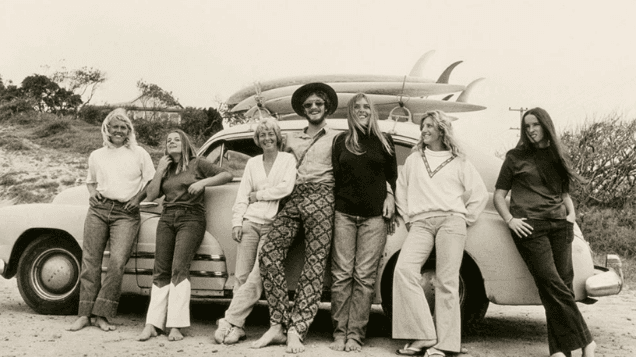First published in VICE Weekends, November 2016.
Even if you’ve never seen a John Witzig photograph, chances are that you’ve entered its world in your head. The legendary photographer, who was friends with surfing icons such as Wayne Lynch, Nat Young, and Bob McTavish, is best known for spending the late ’60s and ’70s documenting the culture of coastal Australia. But his images of wild-haired boys running towards the ocean, friends in front of crumbling weatherboard beach shacks, and surfers riding glassy swells also evoke a certain fantasy about being young in Australia back then. It’s one that’s so idyllic, it’s hard to believe it really existed—even if you can practically smell the meadows of seagrass and the salty air.
“I’ve been fascinated by photographs from as early as I can remember and I’ve always been a magazine obsessive, but when I started taking surfing seriously, I was probably about 14 or 15—it was about 1959,” says Witzig, a former architecture student who went on to edit Surf International magazine and co-found cult surfing publication Tracks. “I knew Bob Evans [the publisher of Surfing World] and watched people taking surfing photographs and thought, ‘Golly, that’s not that hard!’ People like Nat and Bob just happened to be my friends; the people I surfed with. And from about 1966 on was when things really started happening in Australian surfing — before that we just copied the United States. Surfing was such a little world and it was amateurish, all based on shared enthusiasm. It’s only in the last decade or so that it’s been seen through a social documentary lens.”
Although his images capture the idealism of ’60s and ’70s Australia, a place where identity was as unchartered as the coastline, Witzig also tapped into that pre-Instagram sense of life unfolding in the moment and the private nature of the bonds between friends. A fan of the French photographer Henri Cartier-Bresson, he ranks Arcadia, a shot that shows McTavish and Lynch running across a creek in the Byron Bay hinterland, as one of his most defining.
“Arcadia shows Bob and Wayne at Possum Creek and I’ve loved it from the time I took it in 1969 until now,” says Witzig, who still lives on the NSW North Coast. “It ended up being the hero image for my 2014 show at the National Portrait Gallery. The scene wasn’t set up in any way. I was just recording what the people around me were doing. I was aware that Cartier-Bresson and other photographers like him didn’t try to intrude on the scene, that they tried to be invisible. In a way, it was good because those were my friends and they got used to me being there with a camera. It didn’t change anything.”
For Witzig, who chronicled the move away from the longboards associated with Californian surfing to the shortboards that would go on to define the sport internationally, surf culture was a metaphor for Australia’s obsession with the US. He questioned this slavishness in We’re Tops Now, a 1967 cover story for American publication Surfer written after Young won the World Surfing Championship in California in 1966. In 1970, he co-founded Tracks, along with Alby Falzon and David Elfick. Witzig says that the magazine, which became a strong voice in Australia’s counterculture and combined political satire with surfing coverage, was almost an instant success.
“In the ’60s, we just aped Californian surfing and this was during the Vietnam War where, by going into Vietnam, Australia was just aping the US foreign policy,” he tells VICE. “I was at university and we were at all the demonstrations and protests, so surfing always had broader significance for me. In 1969, I got sacked from Surfing International, Alby was working for Surfing World, and David was working for a pop newspaper called Go-Set. Collectively, we came up with Tracks. The Prime Minister at the time was William McMahon and he was just a joke so we made fun of him and we instantly found an audience who liked our adolescent, rebellious attitude. It was very much the spirit of the times. We thought we could do it and we just did.”
Although Witzig’s photography has been the subject of A Golden Age: Surfing Revolutionary 1960s and ’70s, a 2013 book by New York imprint Rizzoli, and Arcadia: A Sound of the Sea, a 2014 retrospective at the National Portrait Gallery, he finds the new interest in his work unexpected.
“The idea that a major New York publisher would want to do a book of my pictures and that the National Portrait Gallery would do a show is ludicrous. I’m just astonished, to tell you the truth,” he says. “I was 70 in 2014, so that it’s happening now is hilarious. I don’t know why 30 year old kids are interested, although it’s wonderfully gratifying. There’s definitely a nostalgic element to it, but there’s something else there too.”
